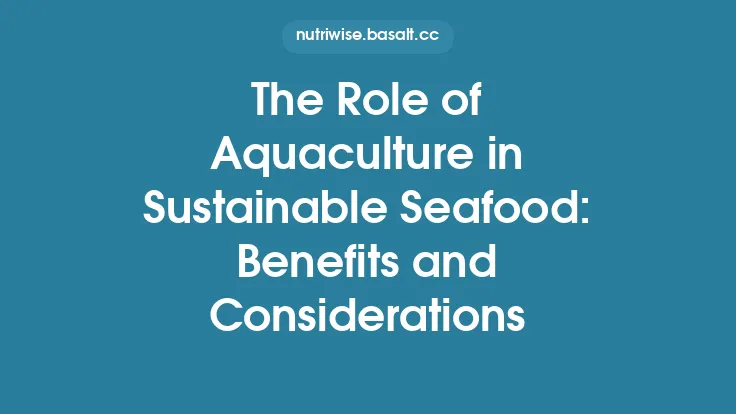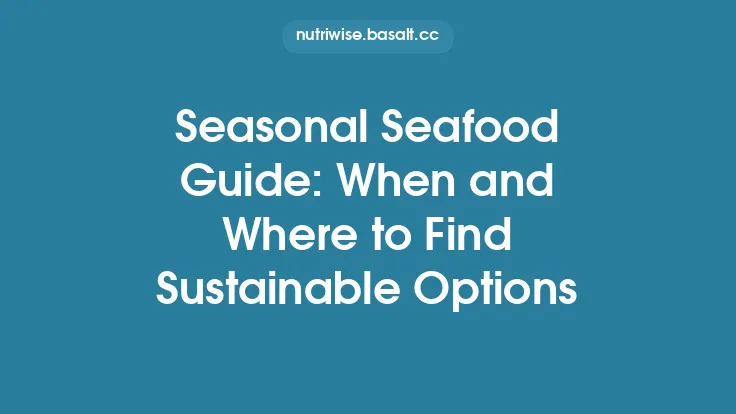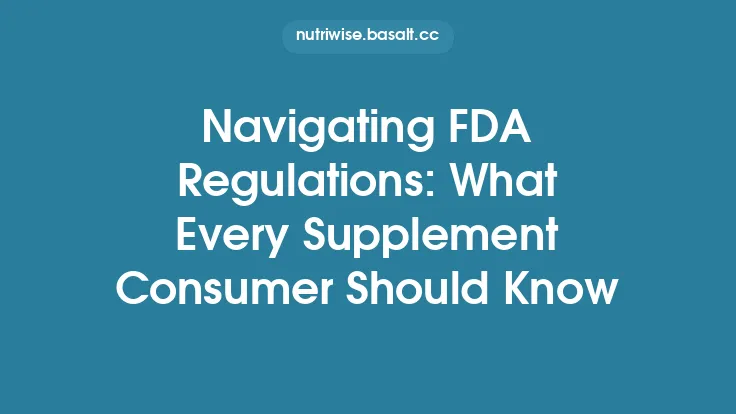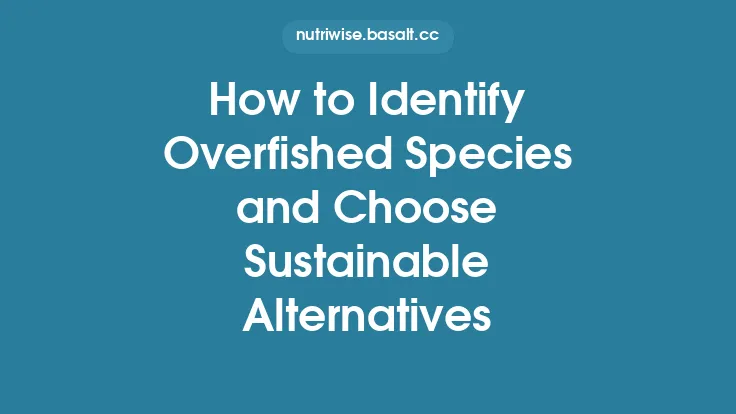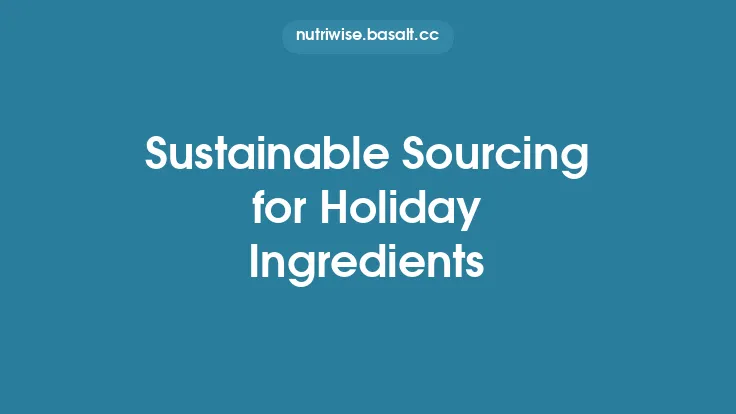Fish oil has become a staple in many households, prized for its high concentrations of EPA and DHA. While the health benefits of these omega‑3 fatty acids are well‑documented, an equally important conversation is emerging around how the oil is sourced. Sustainable sourcing ensures that the marine ecosystems we rely on remain healthy for future generations, and it also protects the quality and integrity of the product you bring to your kitchen or supplement cabinet. Understanding the environmental, economic, and social dimensions of fish‑oil production empowers consumers to make choices that align with both personal wellness and planetary stewardship.
The Environmental Footprint of Traditional Fish‑Oil Harvesting
Overfishing and Stock Depletion
Conventional fish‑oil extraction often targets small, pelagic species such as anchovies, sardines, and menhaden. When these populations are harvested faster than they can reproduce, it leads to stock collapse, disrupting food webs and threatening the livelihoods of fishing communities. Sustainable fisheries aim to keep harvest levels within scientifically determined limits, known as Maximum Sustainable Yield (MSY), to prevent long‑term depletion.
By‑catch and Habitat Damage
Certain fishing gears—particularly mid‑water trawls—can unintentionally capture non‑target species (by‑catch) and damage the seafloor. By‑catch may include juvenile fish, marine mammals, and seabirds, all of which contribute to biodiversity loss. Sustainable sourcing prioritizes gear types that minimize these impacts, such as purse‑seine nets equipped with escape panels or pole‑and‑line methods.
Carbon Emissions and Energy Use
The extraction, processing, and transportation of fish oil involve energy‑intensive steps that contribute to greenhouse‑gas emissions. Sustainable operations seek to reduce their carbon footprint through optimized logistics, renewable energy integration, and waste‑to‑energy initiatives.
Certified Sustainable Fisheries: What the Labels Mean
Marine Stewardship Council (MSC)
The MSC is one of the most recognized certification programs for wild‑caught fisheries. To earn MSC certification, a fishery must demonstrate: (1) a healthy fish stock, (2) minimal environmental impact, and (3) effective management. Products bearing the MSC blue fish logo have undergone third‑party audits and are traceable from sea to shelf.
Friend of the Sea (FOS)
FOS focuses on both wild‑caught and aquaculture operations, emphasizing responsible sourcing, reduced by‑catch, and compliance with international regulations. The FOS label also requires that the fish oil be derived from species that are not endangered and that the processing facilities meet environmental standards.
GlobalG.A.P. and ISO 14001
While primarily associated with agricultural and manufacturing practices, these certifications address broader environmental management systems. When a fish‑oil producer holds ISO 14001, it signals a commitment to continuous improvement in environmental performance, including waste reduction and energy efficiency.
Traceability: From Ocean to Bottle
Chain‑of‑Custody Documentation
A robust traceability system records every transaction—from the catch or harvest event, through processing, to final packaging. This documentation helps verify that the oil originates from a certified sustainable source and prevents adulteration or mislabeling.
Blockchain and Digital Platforms
Emerging technologies such as blockchain provide immutable records of each step in the supply chain. Consumers can scan QR codes on product packaging to view real‑time data on the fish species, catch location, fishing method, and certification status, fostering transparency and trust.
Third‑Party Audits
Independent auditors periodically assess the integrity of traceability systems. Their reports, often made publicly available, give consumers confidence that the claimed sustainability practices are being upheld.
Sustainable Aquaculture: An Alternative Path
Closed‑Loop Systems
Modern fish‑oil production increasingly leverages aquaculture species like farmed anchovies or sardines raised in closed‑loop systems. These setups recycle water, control feed inputs, and minimize waste discharge, reducing the ecological footprint compared with open‑sea capture.
Feed Sustainability
The composition of feed is critical. Sustainable farms use feed formulations that incorporate responsibly sourced fishmeal, algae, or insect protein, thereby decreasing reliance on wild fish stocks and lowering the overall demand for marine resources.
Regulatory Oversight
Aquaculture operations seeking sustainability certification must comply with stringent standards regarding water quality, disease management, and escape prevention. Certifications such as Aquaculture Stewardship Council (ASC) verify that farms meet these criteria.
Economic and Social Dimensions
Supporting Coastal Communities
Sustainable sourcing often involves small‑scale, community‑based fisheries that adhere to traditional stewardship practices. Purchasing fish‑oil from these sources helps preserve cultural heritage and provides stable income for coastal families.
Fair Labor Practices
Ethical sourcing extends beyond environmental concerns to include worker safety, fair wages, and humane working conditions. Certifications like Fair Trade for fisheries assess these social factors, ensuring that the product’s journey respects human rights.
Market Incentives
Consumer demand for responsibly sourced fish oil drives market competition, encouraging more producers to adopt sustainable practices. As the premium for certified products becomes normalized, economies of scale can lower costs, making sustainability more accessible.
How Consumers Can Verify Sustainable Claims
- Look for Recognized Certification Logos – MSC, FOS, ASC, and similar symbols are vetted by independent bodies.
- Check the Species and Origin – Transparent labeling that specifies the fish species and catch region is a good indicator of traceability.
- Research the Manufacturer’s Sustainability Report – Many reputable brands publish annual reports detailing their sourcing policies, carbon‑reduction initiatives, and progress toward sustainability goals.
- Utilize QR Codes and Digital Traceability Tools – Scanning these can provide real‑time verification of the product’s supply chain.
- Prefer Products with Full‑Chain Transparency – Brands that disclose processing methods, purification steps, and third‑party testing results demonstrate a higher level of accountability.
Future Trends in Sustainable Fish‑Oil Production
Algal‑Based EPA/DHA as a Complement
While not fish‑derived, algae cultivation offers a parallel route to produce EPA and DHA without pressure on marine stocks. Advances in bioreactor technology are making algal oil increasingly cost‑competitive, potentially reducing the demand for wild‑caught fish oil.
Circular Economy Approaches
Innovations that valorize fish‑processing by‑products (e.g., using waste fish heads and frames for oil extraction) improve resource efficiency and lower waste. Coupled with renewable energy integration, these practices move the industry toward a circular model.
Enhanced Genetic Selection for Faster‑Growing, Low‑Impact Species
Selective breeding programs aim to develop fish strains that reach harvest size more quickly and convert feed to oil more efficiently, thereby reducing the overall environmental load per unit of oil produced.
Policy Evolution and International Agreements
Global frameworks such as the United Nations Sustainable Development Goal 14 (Life Below Water) and regional fisheries management organizations are tightening quotas and enforcing stricter sustainability standards, shaping the future landscape of fish‑oil sourcing.
Bottom Line
Choosing sustainably sourced fish oil is a tangible way for consumers to align their health goals with environmental responsibility. By paying attention to certification labels, traceability mechanisms, and the broader social impact of the supply chain, shoppers can support practices that protect marine ecosystems, empower coastal communities, and foster a resilient market for omega‑3 supplements. As the industry evolves—embracing cleaner aquaculture, algal alternatives, and digital transparency—the path toward truly sustainable fish‑oil production becomes clearer, offering a win‑win for both people and the planet.
